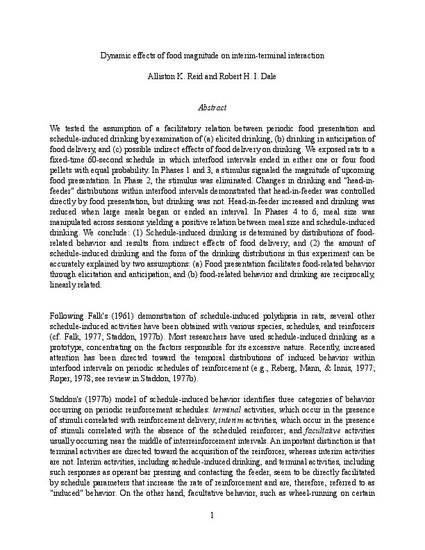
We tested the assumption of a facilitatory relation between periodic food presentation and schedule-induced drinking by examination of (a) elicited drinking, (b) drinking in anticipation of food delivery, and (c) possible indirect effects of food delivery on drinking. We exposed rats to a fixed-time 60-second schedule in which interfood intervals ended in either one or four food pellets with equal probability. In Phases 1 and 3, a stimulus signaled the magnitude of upcoming food presentation. In Phase 2, the stimulus was eliminated. Changes in drinking and "head-in-feeder" distributions within interfood intervals demonstrated that head-in-feeder was controlled directly by food presentation, but drinking was not. Head-in-feeder increased and drinking was reduced when large meals began or ended an interval. In Phases 4 to 6, meal size was manipulated across sessions yielding a positive relation between meal size and schedule-induced drinking. We conclude: (1) Schedule-induced drinking is determined by distributions of food-related behavior and results from indirect effects of food delivery; and (2) the amount of schedule-induced drinking and the form of the drinking distributions in this experiment can be accurately explained by two assumptions: (a) Food presentation facilitates food-related behavior through elicitation and anticipation; and (b) food-related behavior and drinking are reciprocally, linearly related.
This article may not exactly replicate the final version published in the SEAB journal. It is not the copy of record. The copy of record may be located at doi: 10.1901/jeab.1983.39-135
